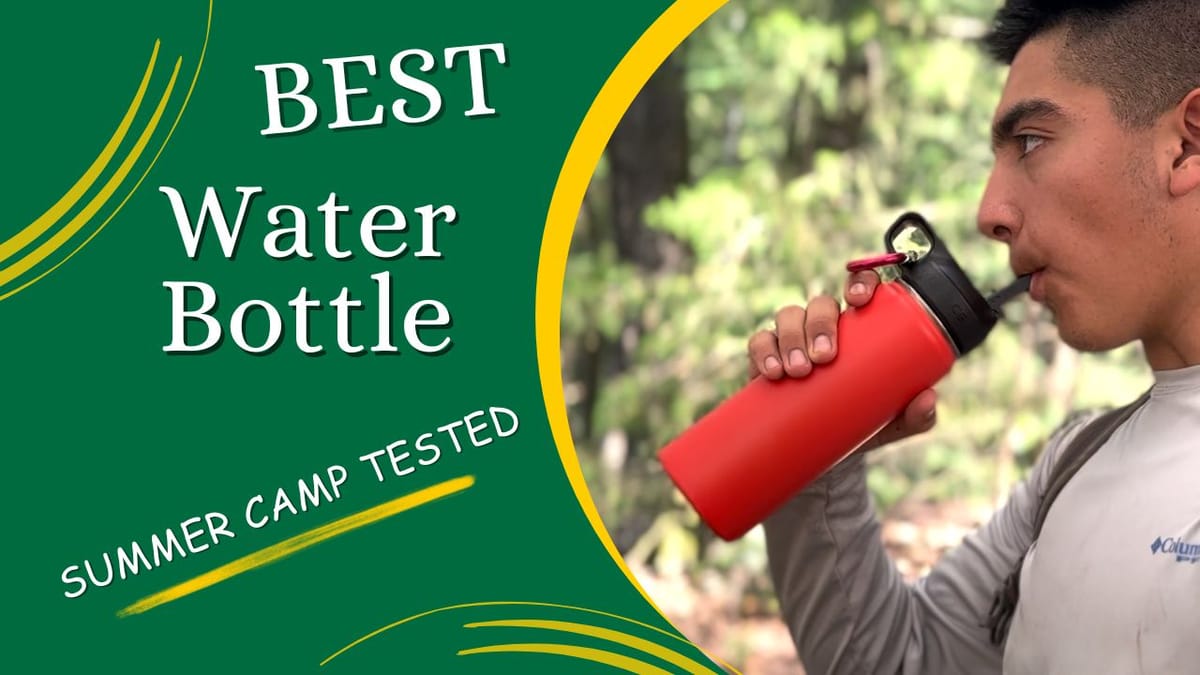Water Bottle Battle


They say at summer camp to always drink plenty of water, and I couldn’t agree more. Personally, I love ice-cold water, especially during those hot summer days packed with activities. Luckily, most summer camp dining halls have ice machines, making it easy to fill up your water bottle at breakfast, lunch, and dinner. That got me wondering: which insulated water bottle is the best for keeping water ice-cold the longest? So, I decided to test a few options with the help of two other Scouts.
Let me introduce the contenders. First up, I’m using The Coldest Water bottle. At the time of this test, it’s priced at around $32. The company claims it keeps liquids cold for 36+ hours and hot for 12+ hours. This model only comes with one lid. Hayden, another Scout, is testing the Iron Flask, which costs about $21. It’s designed to keep cold liquids for 24+ hours and hot liquids for 12+ hours. This one comes with three different lids. Finally, Jonathan has the Hydro Cell, priced at around $19. According to the company, it keeps cold liquids for 24+ hours and hot liquids for 12+ hours. It comes with two lids. One important note: all three bottles are hand-wash only—a bit of a bummer since I prefer the convenience of a dishwasher.
Since most Scouts commonly use Nalgene bottles, we decided to include one in our test for comparison. While not insulated, Nalgenes are known for their durability and come with a lifetime warranty. Prices for these bottles range from $9 to $30, depending on the size. Now, let’s dive into the test.
We filled each insulated bottle three-quarters full of ice and topped it off with water. For consistency, we also filled the Nalgene to the base of its screw-on top. The test began at 8:30 a.m., just before morning flags. Unsurprisingly, within 15 minutes, the Nalgene was already sweating, while the insulated bottles remained dry.
Two hours later, I caught up with Jonathan and Hayden at the climbing tower, where Jonathan was finishing his climbing merit badge. Jonathan’s Hydro Cell still had ice, even after his second refill. After their morning merit badge classes, we regrouped back at camp to evaluate how the bottles were performing.
By 12:58 p.m., we took our first temperature readings:
- The Coldest Water: 32.0°F
- Iron Flask: 32.9°F
- Hydro Cell: 31.1°F
At 2:04 p.m., we checked again:
- The Coldest Water: 32.9°F
- Iron Flask: 33.4°F
- Hydro Cell: 32.2°F
Finally, at 4:00 p.m., with the outside temperature soaring to 93°F, the results were clear. The Iron Flask had barely any ice left. The Coldest Water came in second, and the Hydro Cell retained the most ice. Final temperature readings:
- Iron Flask: 36.5°F
- The Coldest Water: 32.4°F
- Hydro Cell: 32.2°F
It’s worth noting that the Iron Flask only has double-wall insulation, while The Coldest Water and Hydro Cell boast triple-wall insulation, which likely contributed to their superior performance.
While the test wasn’t scientific, it provided valuable insights. If you’re planning a camping trip, I’d recommend using a larger insulated bottle than the 18-ounce ones we tested. Scouts go through a lot of water during activities, and refilling frequently can be inconvenient. As for the Nalgene, it’s still a fantastic choice for its durability and lifetime warranty, even though it can’t keep water cold like the insulated bottles.
If you’re as passionate about ice-cold water as I am, I hope you found this comparison helpful.
